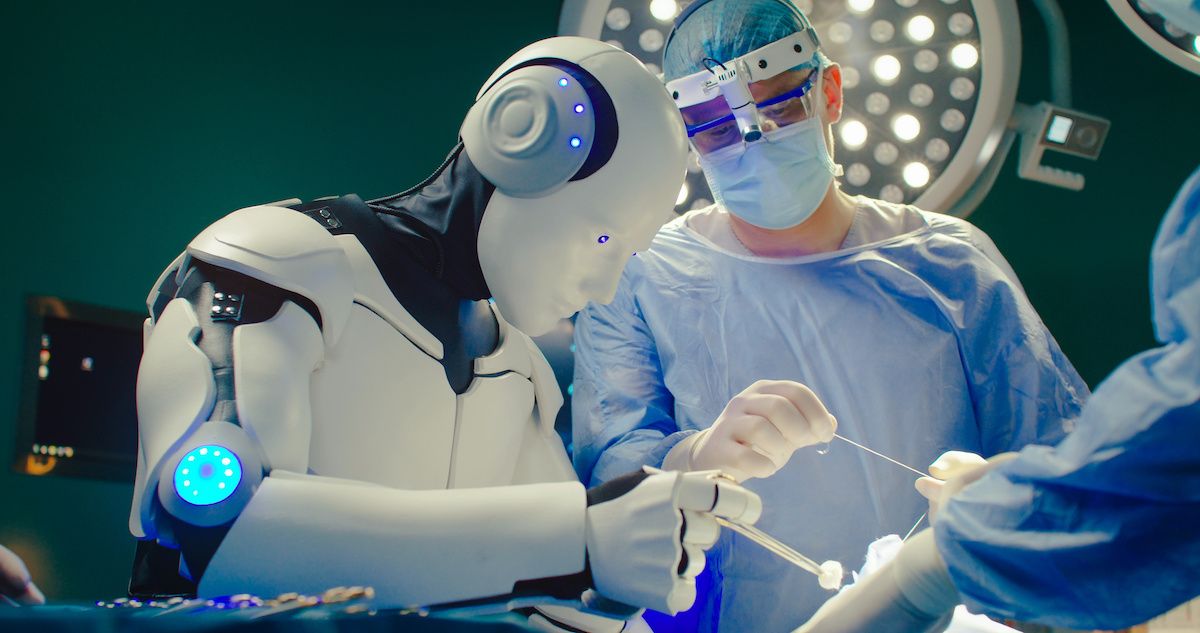News
Article
Technology's role in combating clinician burnout
Author(s):
AI and other emerging technologies can reduce the administrative burden that leads to burnout
Burnout has long been an unwelcome companion for primary care physicians, casting its imposing shadow over those dedicated to the profession. However, a recent survey reveals that the specter of burnout is starting to affect nursing and medical students, even before they’ve even donned their graduation caps.
he survey found that58% of these aspiring health care professionals are now contemplating a career path outside of primary care due to concerns over burnout. This shows that we can no longer consider burnout a mere personal challenge but a pressing concern for the whole industry.
Without a steady stream of new primary care physicians, hospitals will face a widening labor gap at a time when an aging U.S. population is already creating ahigher demand for professional caregivers. Solving this issue will require innovative approaches, which many health systems and hospitals are now attempting through artificial intelligence (AI) and machine-learning technologies.
Leveraging tech to lighten the load
Burnout can be a complex issue, one that negatively affects not only the mental health of physicians but also patient outcomes. While many physicians are accustomed to working in highly demanding roles, the confluence of long hours, heavy workloads, limited support, and the emotional toll of patient care can create a perfect storm for exhaustion and dissatisfaction. As such, the first priority of a health system that seeks to reduce burnout should be to work toward decreasing and streamlining administrative burdens for physicians.
Take electronic health records (EHRs), for example. When EHRs first arrived on the scene, the expectation was they would reduce the quantity of paperwork that physicians were responsible for. In reality, all they’ve done is move the paperwork to a computer screen where the same problems with data silos, duplicate data entry, and inefficient workflows persist. These issues can contribute to physician burnout, while also impeding patient care.
In response to these challenges, more health systems are turning to emerging technologies such as AI, voice recognition, and virtual assistants. When properly deployed these tools can enable physicians to quickly and autonomously document care, retrieve clinical data, and create orders using just their voice or an application. In onesurvey, 90% of physicians agreed that speech recognition technology can improve the efficiency of clinical documentation, while 70% agreed that ambient technology (i.e., background-integrated systems) allows them to focus more on patient care.
However, the efficacy of these technologies hinges on the presence of a fully integrated and standardized health data system at that particular facility. Otherwise, the challenges of data silos and inefficient workflows will persist.
To overcome these challenges, health care providers should establish a comprehensive data management framework to outline data ownership, quality standards, and data stewardship responsibilities. This will provide a roadmap for health systems to navigate the complexities of data integration, ensuring that data remain accurate, consistent, and compatible across different systems.
AI in telehealth
Another way technology can help prevent burnout is through telehealth. Today, AI-driven telehealth platforms can empower physicians through remote team collaboration, workload prioritization, and virtual peer support networks. For remote collaboration, AI can provide tools for efficient communication, coordination, and information sharing.
In terms of workload, AI algorithms can help identify and prioritize patient cases by urgency. And for virtual peer support, AI can analyze interaction patterns and learn from successful collaborations.
But while such capabilities are quickly becoming an essential part of the health care landscape, many providers have been slow to adopt AI-driven telehealth platforms. Part of this is due to their simply being unaware of what’s possible, but another part of this hesitation stems from fears that AI will replace primary care physicians. This is a big misconception that can be found in almost every industry where AI is finding use cases.
As such, when talking about AI adoption, it is vital to make clear to physicians that the goal is not to replace them but to make their jobs easier. It’s like having a virtual assistant that has been trained to handle administrative tasks, assess patients, and provide resources for managing stress. This assistance can make a huge difference in a physician’s daily workload, allowing them to perform highly-quality work with less effort.
In short, technology can take a lot of pressure off physicians and help to reshape the health care landscape. As we navigate the complexities of reducing burnout among primary care physicians, AI and other innovative technologies offer a promising path forward.
That said, to embrace these advances, health care providers must take a comprehensive approach to developing a seamless and integrated health data system. Only then can health organizations realize the full potential of these technologies.
Oakkar Oakkar, MSIS, is CEO and co-founder of Keona Health.






